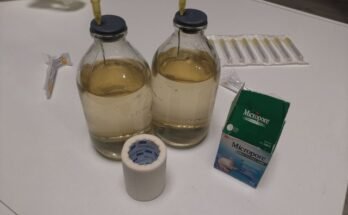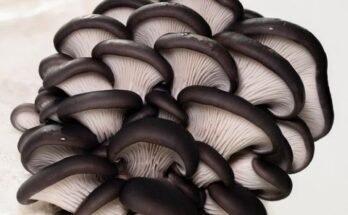Both oyster mushrooms and button mushrooms are considered a delicacy throughout the world. Therefore, mushroom cultivators often find themselves in a situation where they just can’t decide which mushroom species is the best option for them to grow. As every single mushroom species prefers different environmental conditions, to heavily yield, considering your growing environment may be crucial to pick which mushroom should you choose to cultivate.
Oyster Mushrooms (Pleurotus ostreatus)
There are many different sub-species of these astounding shell-like mushrooms. Some prefer colder temperatures, therefore, they are grown in the winter, while other strains prefer warmer growing conditions. However, they are probably one the easiest kind of mushrooms to grow.
How to Grow Oyster Mushrooms?
Substrate
Oyster mushrooms are wood-loving mushrooms, however, they could be grown on various mediums such as straw, or sawdust. Oyster mushrooms can be grown on logs as well, however, this can be quite a hit or miss, and that will take up to a year for your first harvest. On the other hand, growing them on straw or sawdust requires you to pasteurize the medium first to kill off residing micro-organisms that will compete with the mycelium, avoiding this process could easily end up in contamination.
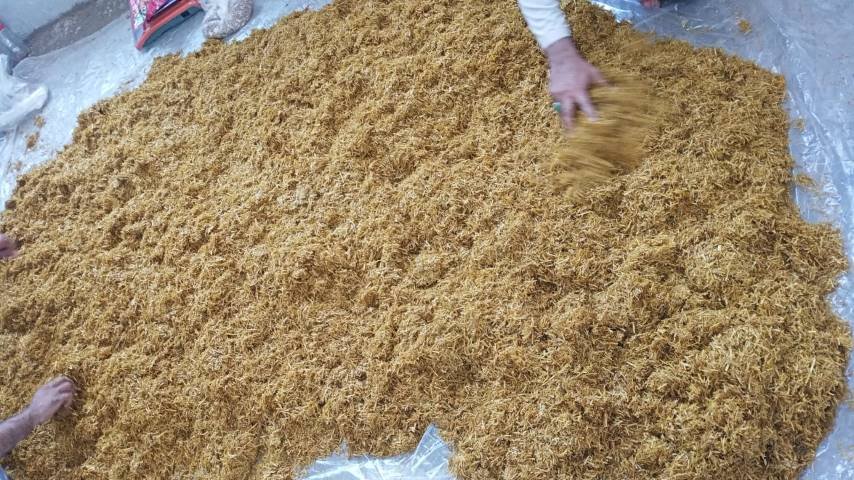
Temperature
To have the best possible result, growing oyster mushrooms in the correct temperature range are critical. However, there are many different oyster mushroom sub-species and every single one has different preferred temperatures.
Pearl oyster mushrooms (Pleurotus ostreatus) prefer warmer temperatures ranging from 70 to 75°F with the fruiting temperatures being 60-70°F.
Phoenix oyster mushroom (Pleurotus pulmonarius), Golden oyster mushroom (Pleurotus citrinopileatus) and Pink oyster mushroom (Pleurotus djamor) perform the best at warmer temperatures ranging from 64 to 86°F.
Blue oyster mushrooms (Pleurotus ostreatus var. columbinus) and King oyster mushrooms (Pleurotus eryngii) show better results when grown in much cooler temperatures ranging between 45 to 65°F.
It is important to be well-informed as you can adjust the temperature regarding the need of your chosen species.
Humidity and CO2
All mushrooms love highly humid environments, oyster mushrooms do not deviate from this fact. However, there have been reports of growing them in a humidity ranging from 55% to 70%, although the preferred humidity should be a bit higher in the range of 80% to 90%.
At the beginning phase while mycelium is still developing, always try to keep the humidity at the higher end of around 90%. Higher concentrations of CO2 are preferred in this stage.
Once they start to fruit you can drop the humidity to around 80%. It is also important to have good air circulation and lower CO2 levels at this point.
Harvest
Growth rates vary among sub-species, and the average temperature the block has been exposed will affect the speed of growth. The time in which oyster mushrooms will be ready for harvest is commonly anywhere from 6 to 12 days.
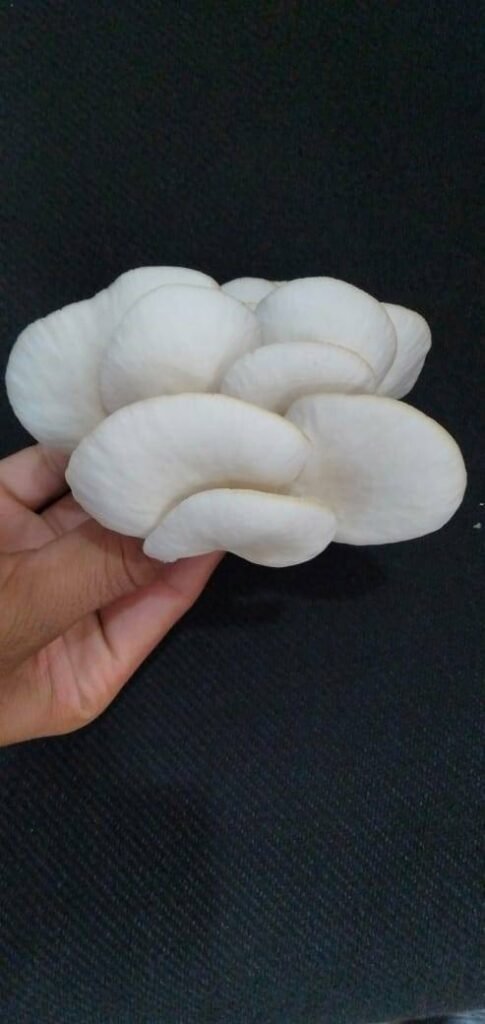
Harvesting mushrooms is not determined by their size, but rather by their shape. You should harvest all oyster mushroom varieties when their caps are slightly downturned. It will be more fragile and have a shorter fridge life if the caps start flattening or upturning.
Button Mushrooms (Agaricus bisporus)
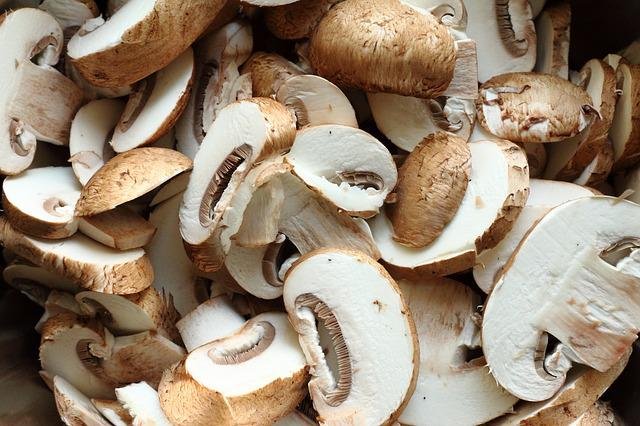
The button mushroom is one of the most widely cultivated mushroom species in the world. Cultivating these mushrooms is very easy and inexpensive, it truly is a great choice if you are a beginner. They can be grown indoors and outdoors, however growing mushrooms indoors is generally considered a better practice, as you can control the environmental elements such as humidity, temperature, air exchange, and CO2 levels.
There are several reasons why are button mushrooms considered to be one of the easiest fungi species to grow. First of all, they do not require sunlight, making them a perfect apartment dweller. They are pretty temperature resistant, meaning that they can be grown at any time of the year including winter.
How to Grow Button Mushrooms?
Soil
Button mushrooms perform the best in nitrogen-rich manure, like horse manure. To make bedding for your button mushrooms you will need a large tray that is at least 6 inches deep. The tray material can be anything from metal and wood to plastic, it’s really about your preference. Fill your tray with the manure leaving a few inches of space below the rim of the box. Spray it with inoculated material, or spawn and mist it thoroughly. If you are using spawn, add a few extra inches of substrate (manure) on top of it. Keep in mind that the substrate should always be pasteurized or sterilized before using it for growing any kind of mushroom.
Ideal Temperature
For the mycelium to grow, button mushrooms prefer a little warmer temperature of the medium. Ideally, you would want the temperature to be as close to 70℉ as possible. If the substrate gets too chilly, consider putting the tray on a heating pad to bring up the temperature. However, overheating the medium could result in the mycelium dying. After a few weeks, you should start noticing a fine white webbing on the surface of the bed, this is the starting point of your mushroom colony and it’s called mycelium. Cover the mycelium with a couple of inches of damp potting soil or peat. This technique is called casing. After the mycelium is cased, lower the bed’s temperature to around 55℉ and make sure that the bed stays moist. Sometimes it’s a good idea to cover the whole thing with plastic wrap to keep the humidity at optimal levels. In about 3 to 4 weeks, you should start to see the fruit bodies develop.
Humidity and CO2
Managing a good relative humidity is the most important part of growing mushrooms in general, besides temperature. The humidity levels at the spawn stage, or the early stage while mycelium is developing should be around 90%, followed by slightly higher levels of CO2, which will in the end benefit the mushrooms and increase the speed of their growth.
Once you case your mushroom bed a slightly lower humidity of 85% will do the trick, however, keeping them in the 90% won’t do much harm. At this point, low CO2 concentrations would be favorable for reproductive growth at this particular stage.
At the fruiting stage, you will want to slightly lower your humidity to around 80-85% to get the best results and most rewarding yields. At this point, it’s important to have a good air exchange and lower CO2 levels, if the CO2 is too high mushrooms will extend toward oxygen making their stems longer than usual.
Harvest
At this point taking care of button mushrooms is very easy. When they reach the desired size, harvest them by twisting them out of the soil, or using a sharp knife to cut the bottom of the stem. Fill the empty space with more casing to make room for new mushrooms to develop. Most of the time the bed should continue to produce mushrooms for 3 to 6 months.
How To Choose The Best Mushroom To Grow?
Different mushroom species have unique growing quirks, so choose the best one that will suit your needs and skill level. Although both oyster mushrooms and button mushrooms are considered easy-to-grow species, so skill vise you will not have a problem growing any of them.
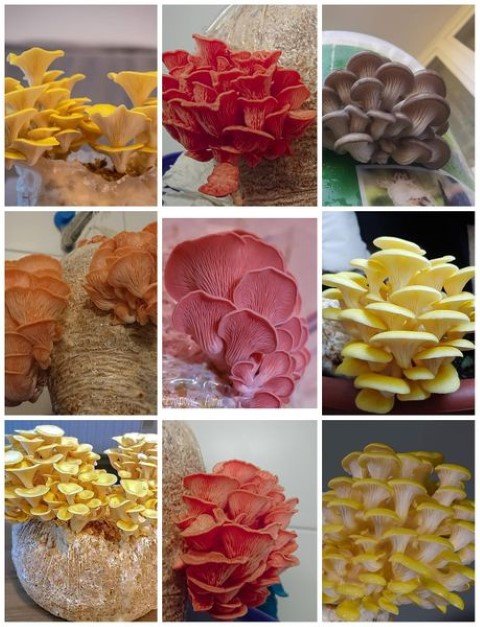
Another thing to take into consideration is how would you like to use your mushrooms. If you are looking for a high-yielding species for commercial growing oyster mushrooms will be the better pick. Also, an important thing to take into notice for commercial cultivation is the demand for certain mushroom species in your area. For instance, if there are not many button mushroom growers and a lot of oyster mushroom farms, maybe button mushrooms would be the better choice.
If you want to grow mushrooms at home for your personal needs, consider providing the optimal environment for every mushroom species. For example, if you want to grow during the winter, or you live in a cooler climate it would be better to pick blue oyster mushrooms than gold ones say, as they tolerate colder climates much better.
Indoor vs Outdoor Mushroom Grow
Mushrooms are greatly affected by their growing environment. The most important elements for a growing environment are humidity, temperature, light, and ambient level of CO2. It appears that mushrooms react differently to changes in these elements.
For instance, button mushrooms don’t require light at all to produce normal-looking fruits. On the other hand oyster mushrooms, however, require a certain amount of light to fruit normally.
Due to the difficulty of replicating outdoor conditions within a manufactured environment, mushrooms grown outdoors can look quite different than those grown indoors. The most challenging aspect of growing mushrooms indoors is maintaining adequate fresh air levels.
The majority of mushrooms usually grow on dead or dying trees or manure, they use the inside of a medium for nutrition and for growing out the mycelial network. When the mushroom is ready to fruit, it will detect the levels of CO2, which if low enough, would indicate that the mushroom has exited the growing medium and from that point, it can form a fruiting body that can properly disperse its spores.
Indoor cultivation can unintentionally result in elevated CO2 levels if not enough fresh air from the outside is pumped into the growing room.
Read More about Growing oyster Mushrooms outside here.
This can cause the mushrooms to form long stems with small caps. For example, oyster mushroom stems can be chewy therefore they’re not as desired as the cap, for that reason cultivators try to get adequate amounts of fresh air into the grow room. The biggest problem with this strategy is that maintaining adequate humidity with constant air exchange may be difficult.
One way to solve this issue is to precondition the air before the fresh air is blown into the grow room by bringing the relative humidity up.
As we already mentioned, button mushrooms do not require light to grow nice and proper-looking fruits. Because of this property, many button mushroom farms use stacked shelves to grow the mushrooms, and the only light that is required in the grow room is for the cultivators to see what they are doing, On the other hand, most mushroom species such as oyster mushrooms require a certain threshold of light to produce normal-looking fruits.
The final color of the mushroom can be highly affected by light levels. If grown in low light levels, some mushroom species are capable of producing albino fruit bodies as the result.
The Bottom Line
If you are uncertain which mushroom to choose for your next grow, you should first of all be well informed about the mushroom species you are planning to grow as every single species has different preferences. Another important thing to consider is the growing conditions you can provide the desired species, if they are not ideal, you may end up with low-quality mushrooms with long stems and small caps.
There are four main things to consider when preparing the grow room for your mushrooms, humidity, temperature, light, and CO2. However, for button mushrooms, light is not necessary therefore you can forget about that factor. For oyster mushrooms generally, you would want to have a temperature in the range of 64 to 86F°, while that is best determined by the sub-specie of oyster mushroom you are planning to cultivate. On the other hand, button mushrooms can be grown in much lower temperatures of around 55F°. Humidity levels should be around 80 to 90%, although oyster mushrooms tolerate lower humidity pretty well. Maintain CO2 levels low in the fruiting stage and high in the beginning phase when the mycelium is developing.
Determine your needs. Will you grow commercially? Are you growing for yourself? Both of these mushroom species are tasty and considered gourmet. Whatever you choose in the end, if cultivated correctly, satisfaction with the final result will be granted and you will be able to enjoy your mushrooms!


